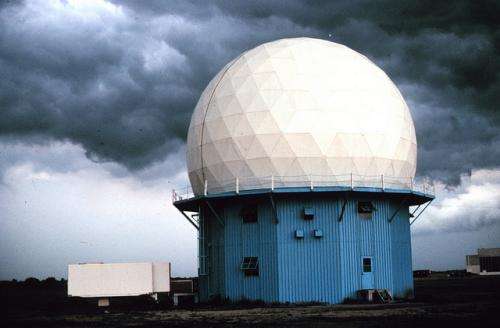“Three Doppler radars would be needed to give majority coverage to the agricultural region, which combined with the state’s 135 automatic weather stations would produce very valuable information for weather plotting,” he says. Credit: NOAA Photo Library
Expanded mobile phone coverage and the introduction of Doppler radar are being pushed to overcome critical shortcomings in WA farming regions.
Department of Agriculture and Food WA (DAFWA) economist John Connell says the technology is vital for WA to remain competitive in a tight global market.
"The only high-resolution radar coverage in WA is located in Perth, which has Doppler functionality, but that is turned off," Mr Connell says.
"WA has got the short-end of the broom on radar coverage, quite significantly.
"[Our current] coverage inland is very truncated in most cases, because we have escarpments.
"The Perth escarpment blocks out any sensible information from beyond that and we don't get very great coverage from Geraldton as you move inland.
"Three Doppler radars would be needed to give majority coverage to the agricultural region, which combined with the state's 135 automatic weather stations would produce very valuable information for weather plotting."
While traditional radar can locate precipitation (rain, snow, sleet) and precipitation intensity, Doppler radar detects wind direction and wind speed, which affords better storm tracking and storm speeds and can provide farmers with forecasts down to six minutes.
Radar informs planting and fertiliser regimes
This can improve decision-making for planting, fertiliser and pesticide applications, stock movements and harvesting.
"The US has fine at-paddock level data for making agronomic decisions on the farm. We're miles behind," Mr Connell says.
The project is costed at $27 million for installation and operation over 20 years but would return savings of around $165 million.
Mr Connell is also pushing for improved mobile phone reception in agricultural areas, as Telstra's current scheme to add 200 telecommunication towers to rural areas largely bypasses farming areas.
An ASEAN Economic Community report suggests 122 additional towers are required to cover the 5.6 million unserved hectares.
Given DAFWA's plan to double agricultural outputs in the state, Mr Connell views this as value for money, enhancing investment prospects and enabling driverless technology, timely equipment repair and supply-chain efficiency.
This includes farmers being able to respond to real-time offers.
"That is one I've heard a number of times during this project—farm operators saying they had missed out on live shipments because they were out of mobile reception," Mr Connell says.
He says expanded mobile coverage would provide social benefits to rural communities, including improved occupational health and safety and access to emergency services people in urban centres take for granted.
Mr Connell presented as part of the 2015 WA Agribusiness Crop Updates conference.
Provided by Science Network WA























